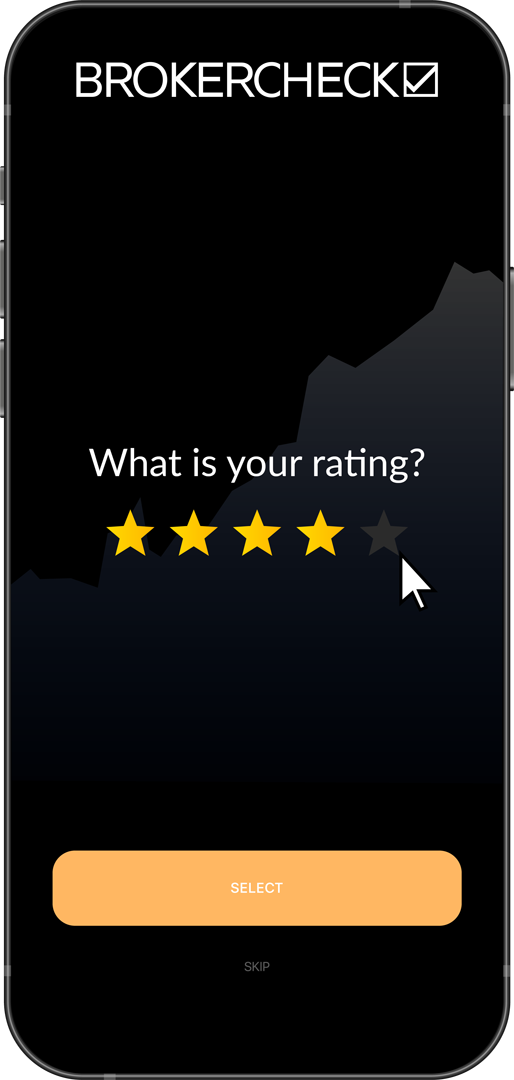Live Chart Of USD/ZAR
1. Understanding USD/ZAR Trading Basics
The USD/ZAR pair comprises of the United States Dollar and the South African Rand. It is a dynamic pair that showcases the exchange rate and provides individuals with the opportunity to profit from differences in currency value. This pair, like other forex trades, operates by setting one currency’s strength against another. In this arrangement, the strength of the US Dollar is staked against the South African Rand.
One primary influence on this pair is the differential in the two countries’ interest rates. The higher interest rates in South Africa can generate a carry trade possibility for traders, encouraging the buy and hold strategy. However, considering the volatility of the South African Rand, it is crucial for traders to examine the risks closely.
It is equally essential to keep a keen eye on economic indicators to navigate USD/ZAR trading. These include inflation rates, GDP growth, unemployment rates, and political news that may play a significant role in changing currency values. It is also worth noting that the USD/ZAR can be particularly sensitive to changes in commodity prices, given South Africa’s economic reliance on its export sectors.
Technical and fundamental analysis are the two primary schools of thought when trading USD/ZAR. Technical analysis involves studying price patterns and trends, looking for signals to buy or sell. On the other hand, fundamental analysis focuses on economic indicators and events, such as changes in government policy or inflation reports. Both of these approaches are crucial for successful trading, and most traders use a blend of the two.
The USD/ZAR forex pair provides a unique trading opportunity for those who can navigate its complexities. This market’s volatility, combined with the fundamental factors affecting both currencies, can create significant potential profit opportunities. As a trader, understanding these dynamics is a critical step forward.

1.1. Background and Function of USD/ZAR
USD/ZAR serves as the financial representation of the exchange rate between the United States Dollar and the South African Rand. It’s important to understand that this pairing is traditionally susceptible to significant fluctuations, largely influenced by the socio-economic climate of both countries. The USD, considered the world’s primary reserve currency, has a profound impact on global trades and markets. Therefore, any shift in the US economy, political scene or Federal Reserve policy, directly impacts the USD/ZAR exchange rate. On the other hand, the ZAR’s value is tied to the often turbulent South African economic landscape, mirroring changes in commodity prices, economic indicators and political instability.
When trading USD/ZAR, traders capitalise on these fluctuations, aiming to buy when the price is low and sell when it is high. The pair is known for its volatility, making it a fruitful field for skilled traders who can expertly negotiate the risk. This characteristic also presents a dynamic arena for those engaging in speculative and day trading activities. In the world of forex trading, understanding the forces that drive the USD/ZAR exchange rate paves the way towards successful trades, whether they’re long-term investments or short-term speculative manoeuvres.
1.2. Factors Influencing USD/ZAR Exchange Rate
The complex nature of the USD/ZAR exchange rate is determined by a multitude of factors that interact dynamically. One such vital factor is the economic health of both the United States and South Africa. As these economic conditions fluctuate, so too does the value of each currency. A sturdy U.S. economy often leads to a powerful U.S. dollar, imposing pressure on the ZAR.
Interest rates and inflation also play crucial roles in influencing the USD/ZAR exchange rate. When South African interest rates rise, it attracts foreign investors seeking a higher return, which strengthens the ZAR against the USD. Conversely, higher inflation in South Africa weakens the ZAR.
Exchange rates are susceptible to the whims of geopolitical events and economic policy decisions. Any heightened political uncertainty or economic policy shifts in either country can sway investor sentiments, impacting exchange rates accordingly. For instance, trade negotiations or policy uncertainties can cause significant volatility.
An unlikely yet potent influencer is weather patterns. South Africa, being a prominent exporter of commodities, is dramatically affected by prolonged periods of drought or excessive rainfall. These weather anomalies can impact the agricultural sector, which in turn influences the health of the economy and the strength of the ZAR.
Lastly, the role of commodities in this exchange rate cannot be downplayed. South Africa is an abundant resource of gold, diamonds and platinum. If the global prices of these commodities rise, demand for ZAR often hikes, thus bolstering its value against the USD.
Each of these factors intermingle to dictate the USD/ZAR exchange rate, making it a complex yet exciting trade prospect for informed and strategic traders. Understanding these influencers can provide an edge in making profitable decisions in the USD/ZAR forex trade market.
2. Mastering Technical Analysis for USD/ZAR Trading

The market’s heartbeat is found in the ebb and flow of price charts, with patterns revealing the undercurrents of supply and demand. Becoming proficient in technical analysis allows for informed predictions and swift, strategic moves when trading USD/ZAR. It’s crucial to regard price action and volume as two vital signs of a market’s health. They are the foundational aspects that reveal opportunities and warn of potential reversals.
Candlestick charts are the preferred instrument for this translating task. They graphically represent price movements in specific timeframes. Each candlestick stands for either bullish enthusiasm or bearish pessimism, expressing the open, close, high, and low within the set period powerfully.
Don’t underestimate the strength of trend lines, either. They map out the market’s general direction and assist in identifying notable support and resistance levels. Breaks in trend lines often signal current momentum changes, marking the right time to either enter or exit trades.
Bodies of water move with the tides, just as markets move with trends. Knowing how to recognize, comprehend, and react to these trends is central to market trend analysis. Stay alert to uptrends, downtrends, and sideways trends. Each type contains subtly different signs— vital cues on whether to buy, sell, or hold off.
Indicators are another dependable tool at a trader’s disposal. They are complex algorithms that digest historical and current price data into digestible clues about market trends. Moving Average Convergence Divergence (MACD), Relative Strength Index (RSI), and Bollinger Bands are a few top picks.
Finally, gaps and key reversals also have a say in the unfolding market narrative. Gaps in the market can imply strong buying or selling pursuits. Key reversals, on the other hand, can suggest that a price trend is nearing its end or a new one is about to begin. Traders use these signals to optimize their decisions.
Do not view technical analysis as a mystical crystal ball promising exact results. Rather, think of it as a powerful torch dispelling the darkness of market uncertainty. Strong understanding and adept use have the power to illuminate the road to successful trading.
2.1. Understanding Chart Patterns
Trading USD/ZAR relies heavily on chart patterns which serve as valuable tools in financial analysis. Gaining insights into these patterns is crucial as it empowers traders to predict potential market movements.
Chart Patterns are visual representations of traders’ behaviour. These patterns are essential in forming a technical analysis and help to spot trends and predict future price movements. These powerful tools are widely recognized and utilized by traders worldwide.
The most common patterns include: head and shoulders, double tops, double bottoms, ascending triangles, and descending triangles. Each pattern communicates a different market indication and understanding them will enhance trading proficiency.
Head and shoulders denote a bearish (downward) reversal pattern. Typically it hints at the exhaustion of an upward trend and the approach of a new downward trend. Conversely, the inverse head and shoulders pattern indicates a bullish (upward) reversal.
A double top pattern emerges when prices peak twice at nearly the same level. This is an omen of a potential bearish reversal. On the flip side, a double bottom pattern features two low points, signaling a potential bullish reversal.
An ascending triangle is characterized by a flat top and upwards sloping bottom line, hinting at a likely upward breakout. The opposite, a descending triangle, has a flat bottom and a downward sloping top line, indicating a possible downward breakout.
Understanding these patterns arms traders with valuable insights into potential market movements, enabling strategic decision-making when trading USD/ZAR. While they are not foolproof, chart patterns are an indispensable tool in a well-rounded trading strategy.
2.2. Utilizing Technical Indicators
A robust variety of technical indicators exists that can be instrumental when trading USD/ZAR. Moving Averages, for instance, are adept at smoothing fluctuating price series and isolating trends, acting as the underpinning for other technical analysis tools. These averages can provide a visual aid for recognizing potential price reversals, supplying traders with useful information on price direction.
Relative Strength Index (RSI), another potent tool, measures the speed and price movement changes. It helps identify overbought or oversold conditions in a market, permitting a trader to recognize potential price reversal points and respond accordingly. Transactions can be timed advantageously when RSI levels reach extreme values of 30 (oversold) or 70 (overbought).
Bollinger Bands are effective for signalling volatility levels; tightening bands suggest decreased volatility and vice versa. With USD/ZAR, heightened volatility often accompanies significant news events related to either the US or South African economies. By spotting rises in volatility, trades can be strategically placed in anticipation of large price swings.
Finally, Fibonacci retracement provides critical levels of support and resistance that can predict potential price targets or reversal points. Extended periods of rises or declines in USD/ZAR prices are frequently followed by retracements. Recognizing these pivotal points can fuel decision-making in entry and exit of trades, presenting an invaluable aspect in risk management.
3. Implementing USD/ZAR Trading Strategies

Implementing successful trading strategies with the USD/ZAR currency pair requires a deep understanding of both US and South African economies. When conducting thorough market research, one must take into account a range of factors that contribute to currency fluctuation. Among these factors, interest rates and inflation rates in both countries still remain as significant contributors.
Understanding Interest Rates is vital for any trader. With a higher interest rate in the US compared to South Africa, the USD typically attracts more investors, pushing the price higher against the ZAR. However, if the South African Reserve Bank‘s interest rates increase, while the Federal Reserve keeps its rates steady or decreases them, traders can expect the ZAR to gain strength.
Inflation Rates, conversely, can negatively impact a currency’s strength. Should South Africa struggle with high inflation rates, the ZAR would likely depreciate against the USD. It becomes crucial, therefore, to monitor inflation trends in both countries closely.
Use of Technical Indicators to map out possible market directions can also be valuable. Paying attention to Resistance and Support Levels, Moving Averages, and Bollinger Bands can provide insights into potential market reactions. Comprehensive market analysis using these data can assist traders in making informed trade decisions.
Moreover, another trading strategy focuses on Economic Calendars. By tracking both US and South African economic reports – GDP, employment figures, consumer indices – traders receive signals of possible currency shifts. With these indicators, it becomes achievable to robustly forecast potential market changes and tactfully react.
By perceptively employing these strategies – keeping tabs on interest and inflation rates, proficient use of technical indicators, and a diligent monitoring of economic calendars— profitable navigation of the complex USD/ZAR market turns feasible. It’s important to note that while these strategies may increase the probability of success, they do not guarantee wins. Continuous market analysis and adaptive strategy refinement remain key to successful trading.
3.1. Hedging with USD/ZAR
When it comes to hedging strategies in forex trading, one popular choice among traders is the USD/ZAR currency pair. Hedging with USD/ZAR provides an opportunity to mitigate potential losses in a volatile forex market. This is typically done by taking an offsetting position, essentially betting against your initial investment.
Why hedge with USD/ZAR? USD/ZAR represents one of the most liquid Emerging Market currency pairs. It’s characterized by high volatility due to the inherent economic conditions in South Africa. These factors combined make it an attractive option for those looking to strategically hedge their trades.
In the practical application of hedging with USD/ZAR, traders often open both a long and a short position. If the trader predicts that USD will strengthen against ZAR, they might buy USD/ZAR. Meanwhile, if some future event might hurt their position, they’ll open a sale on the same currency pair. This way they create a protector, a ‘hedge’, against potential larger losses.
Carefully crafted hedging strategies work as a kind of insurance policy. It’s about smartly managing the portfolio, rather than predicting market trends. Every trader, while hedging, should always focus on protecting potential losses rather than making profits. This careful approach ensures the effective mitigation of risks, but also potentially lower profits – the price for safety.
Hedging is not for everyone. It requires a deep understanding of the global economy, financing, and the ability to monitor positions closely. However, for those willing to invest their time and effort, hedging with USD/ZAR can offer a way to navigate safely in the vast sea of forex market volatility.
3.2. Momentum Trading
Momentum Trading plays a significant role in the financial markets and can be especially pertinent when trading the USD/ZAR currency pair. A close eye on market trends and signs of acceleration can provide valuable clues. Often, traders will notice a strong market move for the USD/ZAR, accompanied by a significant increase in volume. This occurrence, often ascribed to factors such as geo-political events or shifts in economic indicators, signals a possible momentum trading opportunity.
In applying the momentum trading strategy, the trader nurtures an expectancy that the market will continue to move in the same direction due to the sheer force of the trading volume. To thrive in momentum trading, an understanding of technical analysis and an eye for spotting trends goes a long way. Utilizing tools such as a Moving Average Convergence Divergence (MACD) can prove invaluable, as it showcases the relationship between two moving averages of a security’s price.
Yet, caution is the watchword. While momentum trading can offer significant profits if the market does, indeed, continue to move in the expected direction, there equally exists a risk for substantial losses, should the market suddenly reverse. Position sizes should, thus, be carefully calculated, and stop losses strictly adhered to, forming a solid safeguard against potentially adverse moves.
Additionally, due consideration should be given to external factors that could influence the USD/ZAR price movement, such as changes in federal interest rates, economic data releases, or significant political events. These factors can dramatically alter the market’s momentum, propelling the price above or beneath its existing trajectory.
All in all, Momentum Trading is a dynamic approach to trading USD/ZAR, requiring continuous market monitoring, fast decision-making, and relentless risk management. It’s a potent tool for traders willing to embrace its demands and challenges.
3.3. Swing Trading
Swing trading offers a viable strategy when approaching the USD/ZAR foreign exchange pair. Utilizing shorter time frames, the trader aims to profit from the price changes or “swings” that occur within the span of a single day or over several days.
In the context of the USD/ZAR pair, volatility is an important factor to consider. The South African Rand (ZAR) is known for its rapid and significant fluctuations, making it a good candidate for swing trading where such volatility can be exploited for short-term profits. Traders often use a combination of technical analysis tools such as trend lines, price patterns, and moving averages, in conjunction with fundamental analysis to guide their trades.
Moreover, the practice of swing trading requires a comprehensive understanding of the market dynamics including news events, economic indicators, and other factors that may impact the exchange rate of USD/ZAR. For instance, a political event in the United States or a change in South Africa’s economic outlook could lead to substantial movements in the currency pair.
Risk management measures are crucial in this strategy to limit potential losses. This includes utilizing stop-loss orders to limit the risk on each trade and diversifying portfolio holdings to spread potential risk.
It is important to remain disciplined and follow a predetermined trading plan, decision-making should not be emotion-driven but rather based on a sound assessment of market conditions and potential risk/reward scenarios. Practicing swing trading on a demo account first can help traders develop their strategy, gain experience, and learn how to manage the particular challenges that come with trading the volatile USD/ZAR pair.
4. Risk Management in USD/ZAR Trading
Effective risk management constitutes a pillar of success in USD/ZAR currency trading. It’s crucial to understand that currency trading comes with a pronounced level of uncertainty and potential for loss. Hence, devising a well-thought risk management strategy is of utmost significance. One risk limitation technique is setting up stop-loss orders. These automated instructions to your broker sell a security when it reaches a specific price, thus limiting possible losses.
Another fundamental tactic to manage risks is only investing what you can afford to lose. Trading mustn’t interfere with your basic financial requirements; hence it’s paramount not to exceed this limit.
Traders also resort to leveraging to maintain control over large positions with a relatively small investment. However, this could be a double-edged sword as it multiplies not just profit prospects but risks as well. As such, beginner traders should tread cautiously with leverage.
Diversification is another risk-mitigation scheme. By participating in diverse markets or asset classes, you spread the risk and thus decrease vulnerability to a single market downturn.
Continuous learning is yet another strategy that comes into play. By keeping hungrily updated on market trends, economic news, and understanding your trading platform well, you can minimize potential hazards and boost your trading strategy.
Additionally, you can employ hedge strategies. Many professional traders use instruments like futures or options for hedging against potential losses.
In essence, the key to risk management in USD/ZAR trading lies in hewing to a well-determined plan, avoiding emotion-driven decisions, and continually adjusting your strategy according to current market conditions.
4.1. Importance of Stop Loss and Take Profit Points
In the realm of financial trading, an understanding of Stop Loss and Take Profit points is tantamount to the card deck in the hands of a seasoned poker player. Stop Loss and Take Profit represent the cold logic of finance that must coexist with the turbulent emotions of trading.
Trading with the USD/ZAR currency pair is no different. Traders must possess knowledge of these leverage points to optimize potential profits while mitigating risk. Stop Loss serves as the insurance policy for the trader, a predefined level at which the trader’s position is automatically closed to curb further loss. This automated tool, when used smartly, can save traders from catastrophic losses during sudden market fluctuations.
Acting as the other end of the trading spectrum is the Take Profit point. It is the promised land of the trader, the predetermined level which, when reached, automatically sells the open position, guaranteeing a profit. By setting a Take Profit point, traders streamline their trading activity, committing to a predetermined profit point and leaving little room for greed-induced errors.
When trading USD/ZAR, these points assume even greater importance due to the pair’s inherent volatility. South Africa’s economic instability, combined with the US dollar’s global status, can lead to significant price movements in a short time. By utilizing Stop Loss and Take Profit points, traders create a rational frame to contain this unpredictability.
These points also have a psychological benefit. Trading can be an emotional roller-coaster, and decision-making under the influence of fear or greed often leads to sub-optimal outcomes. Stop Loss and Take Profit points provide a psychological compass, keeping traders grounded and action-oriented rather than reaction-oriented. It’s akin to setting the sails before embarking on a voyage, allowing the winds of the market to fill the sails, and the predetermined path to guide the journey.
In essence, these points allow even the most novice trader to create a robust risk management strategy, transforming the seemingly unruly market into an ocean of possibilities.
4.2. The Role of Leverage in Trading
In the complex world of forex trading, leverage tends to be a crucial tool that can significantly augment a trader’s potential returns. Leverage essentially operates like a loan granted to the trader by the brokerage. On the USD/ZAR trading pair, traders utilise leverage to control substantial amounts of currency without needing to provide the full value of the trade upfront.
An illustrative example could be a broker offering a leverage ratio of 100:1. This means, with a deposit of just $1,000, a trader can control a position worth $100,000. Leverage, hence, provides the traders with the opportunity for increased profits, even based on small price movements in the USD/ZAR pair.
However, leverage is a double-edged sword in forex trading that should be wielded carefully. Though increased leverage boosts potential return on investment, it also amplifies the risk of significant losses. If a trade goes against the trader’s predictions, the losses are magnified relative to the leverage used. A fundamental tenet to remember here is that trading with leverage requires a robust risk management strategy to preserve and protect your trading capital.
Adopting a diligent approach, combined with astute risk and money management strategies, is pivotal to niche areas like USD/ZAR forex trading when using leverage. These strategies include setting stop loss orders to automatically exit a trade at a predetermined level and, thus, limit potential losses. Diversifying trading portfolios can also help to spread the risk among different currency pairs or asset classes.
Despite the risks, without leverage, small traders may find it hard to participate meaningfully in significant markets like the forex market. Whether a trader is long or short on the USD/ZAR pair, leverage gives them the means to express their trading strategies more fully. Tools like leverage, paired with proper planning and understanding, are what sets successful forex traders apart.
4.3. Keeping Emotions in Check
In the volatile world of forex trading, keeping emotions under control is of utmost importance. Emotionally driven decisions can lead to hasty actions, diverting from a well-reasoned trading strategy. This is especially true when trading highly fluctuating currency pairs like the USD/ZAR. Regardless of market volatility, it’s necessary to approach each trade with a level head.
The impulse to ride the wave of a winning streak or chase losses can be strong. This is where separating emotions from trading comes into play. Emotions, particularly fear and greed, can derail a trading plan if not kept under control. Frankly, trading is not about luck – it’s about planning and patience.
An essential tool in keeping emotions in check is risk management. By setting a strict limit on potential losses for each trade, stress levels can be kept manageable. This is especially helpful with currency pairs like the USD/ZAR, which is prone to sudden swings. By keeping potential losses within bounds, it becomes much easier to tamp down fears and remain centered amidst market volatility.
Similarly, understanding that losses are a part of trading is vital. They provide valuable lessons and help refine strategies for future trades. Realistically, every trader will experience losses. Accepting this fact is healthy and promotes a balanced mental state.
In the world of USD/ZAR trading, staying emotionally grounded paves the path for success. A successful trader knows when to act, when to hold back, and most importantly, how to keep emotions at bay.










